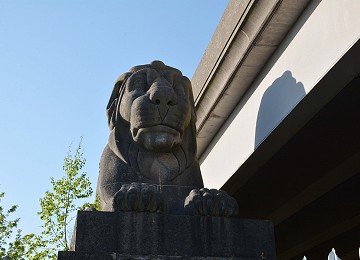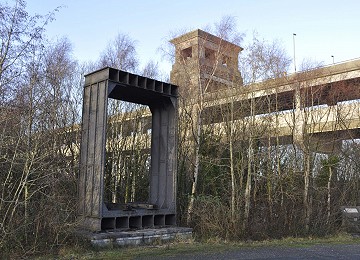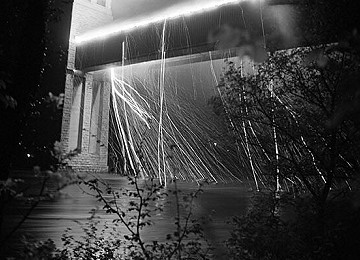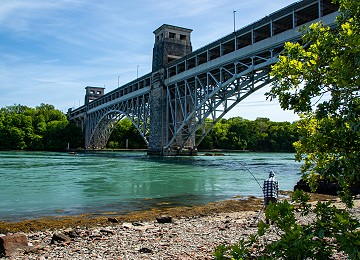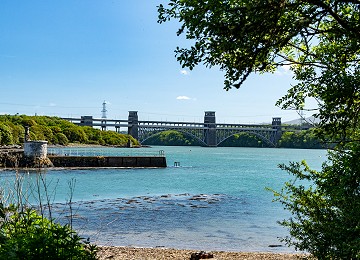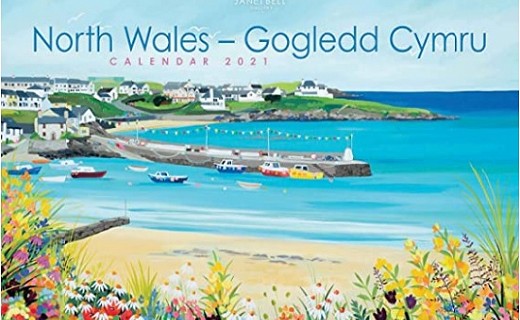the britannia bridge pont britannia
The Britannia bridge or Pont Britannia as it is also known was built to join the Isle of Anglesey and mainland of North Wales via the increasing form of travel by rail, a new link between London and the Port of Holyhead by rail was needed.
The option of utilizing the already existing Menai Suspension bridge was considered, but deemed unsuitable for use by train. In 1980 the upper road deck was opened to carry vehicles across the bridge, with the railway and Britannia lions are underneath.
Robert Stephenson
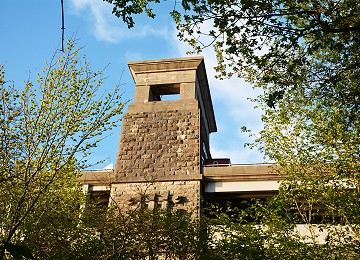
Robert Stephenson (16 October 1803 – 12 October 1859) was famous for being a railway and civil engineer.
In 1846 Robert Stephenson, son of railway pioneer George Stephenson was appointed chief engineer, the construction of the Britannia bridge was started.
This stunning Britannia bridge was completed four years later in March 1850. Robert Stephenson was also the engineer for Conway railway bridge.

Britannia Bridge made from tubular sections
It was required that the Menai Strait remained accessible by the tall ships of the day so needed to be built at least 100 feet above the high water mark.
Originally the Britannia bridge was a tubular design made out of giant wrought iron tube sections joined together creating a square or box shaped tunnel for the trains to travel through.
These large box section were riveted together. You can see one of the old box sections if you walk on the path that is on the left hand side of the bridge, if you travel from the village of Treborth on the mainland side of the Britannia Bridge.
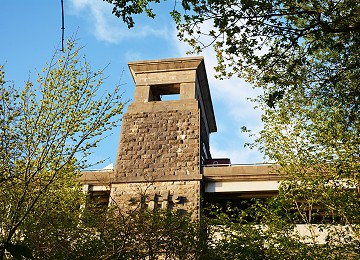
The stone towers of the Britannia bridge were built from limestone like its sister bridge the Menai Suspension bridge also brought from Penmon quarry.
The original bridge was constructed of wrought iron tubes joined together which were supported by the stone towers.
The box sections were built on the shores of the Menai Strait then floated out into position then hoisted into position using very powerful jacks.

The Britannia Bridge Fire
Unfortunately on the evening of 23rd of May 1970 the bridge caught fire when two local boys dropped a burning torch who were believed to be looking for bats. The ceiling of the tubes which were coated in tar caught fire.
Due to the height of the bridge and the lack of available water, the local fire service were unable to extinguish the fire and the whole of the tunnel caught fire, from Anglesey to the mainland side.
The fire, which eventually burnt itself out left the bridge standing, but the intense heat of the fire had compromised the structural integrity of the iron tubes, and after being closed for nearly eighteen months the bridge was completely rebuilt.
The rebuilt bridge looked quite different with steel archways between the stone towers and concrete supports under the approach spans making it look more like a traditional bridge.
With the increase in road traffic and the building of the A55 dual carriage way, the Britannia bridge was to change again and an upper deck was built above the railway line, this new road deck opened in 1980.
This would be another important section of the A55 Expressway, but being the only section of single carriageway on the whole of the A55, it causes congestion at peak times, leading to ideas for yet another bridge crossing the Menai Strait.

The Britannia Bridge Stone Lions
The Britannia bridge was decorated with four large lions sculptured from limestone by John Thomas (1813-1862).
The four lions sit at each corner of the bridge, two on the Anglesey side and two on the mainland side.
Unfortunately these beautiful lions can only be seen by rail or by walking down under the A55 dual carriage way either from the Carreg Bran hotel in Llanfairpwll on the Anglesey side or from near Treborth village on the Bangor side. There is a campaign to raise the Britannia lions so they can be seen from the A55

Anglesey Coastal Path
Section 7 of the Anglesey Coastal path which travels from the beautiful coastal town of Beaumaris along the shores of the Menai Strait and into Llanfairpwll.
This beautiful section of the Anglesey Coastal Path follows a decent section of the Menai Strait and travels under Thomas Telford’s Menai Suspension Bridge and up past Robert Stephenson’s Britannia Bridge.
The section of path between the two bridges runs along side the Swillies or Swellies, the dangerous body of water between the two bridges. It then travels through some beautiful woodland, hugging the shoreline of the Menai Strait, passing closely to Ynys Gorad Goch and then up rather a steep hill past the Britannia Lions to Llanfairpwll.
The link to the map for this section on the Anglesey County Council website is here



